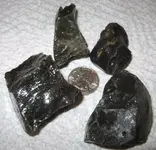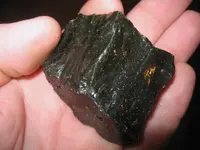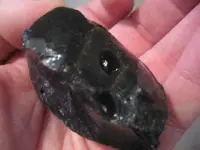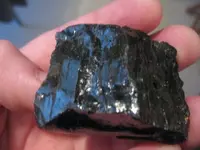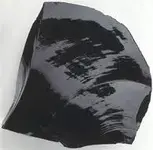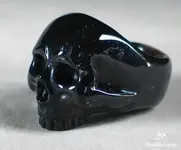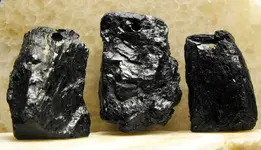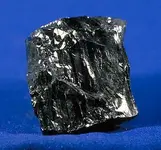HPD answers Tuberale's answers: (Please, don't let us bore you. Not everyone could be iterested in this discourse.)
1. That is not an answer.
It IS an answer. Most obsidian is black for the same reason. Rock that is molten becomes predominantly black.
2. I, too, have a Canyon Diablo, although it is an individual with full crust, not a piece. (Canyon Diablo is the Arizona Meteor Crater) Do they have meteor usage right? I can't argue terminology. And they have drilled quite deeply into the bottom of the crater to mine the iron, without finding any. Puzzling. My question is, why are craters round when most meteors or meteorites come in on a very shallow angle? Shouldn't they be oblong?
Mine has no fusion crust. It does have a lot of rust though.
It should be Meteorite Crater. Meteor is an object still in the air.
Actually, there IS a mass under the crater. But deep. Probably too deep (and too large) to remove. Besides, so many smaller pieces from around it that finding the main mass is less important. Consider Sikohte-Alin from Siberia: tons of material found after it broke up in the high atmosphere. But covering a massive strew field. Some of the pieces buried themselves some 15-25 feet deep. But the pieces didn't form noticeable craters.
3. There are lava flows all over So. Colo and N. New Mex with the columnar "crystals" of basalt. Cool stuff because you know what you are looking at when you see it.
6. Mea culpa on the pua pua.. but there is a name for the ropy lava flows. But I rest my rep on the Aa. You go walk barefoot on an Aa flow and not say "ah...ah....ah....damn." and prove me wrong. That shows that at least one vulcanologist had a sense of humor, or perhaps none at all when he made a midnight run for the potty.
Interesting theory, but wrong. The Hawai'ian language uses many double vowels, both of which are sounded. And A'a is definately Hawai'ian. But because Hawai'i is a chain of islands completely volcanic in origin, the language also has many words for lava. Kind of similar to the Aleutians having many words for snow.
8. We pretty much agree except that all lava bombs are ejecta but not all eject form as lava bombs. But is a non-bomb form of ejecta hits you, ouch!
Not necessarily. Most of the ejecta that hit people all over the world didn't hurt at all. It's called ash or rock ash. Bad stuff to breathe, though.
I am back to offering photos of tektites, both Asian and Czech. Just in case anyone is still bored and still reading this. How did we get on volcanos, anyway?
I would love to see pumice flows (the only pumice I have in my collection came in the pocket of my stone washed jeans) and obsidian flows. The only obsidian mass I have seen is the cliff in Yellowstone. And we dug a big chunk out of the side of the road up to the top of the big cone No. of Santa Fe. The really big one with a ring road around on the top of the crater.



